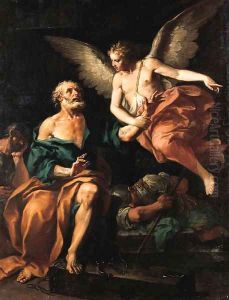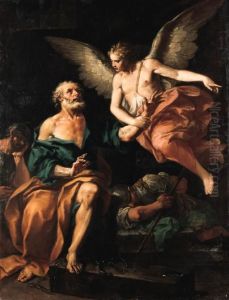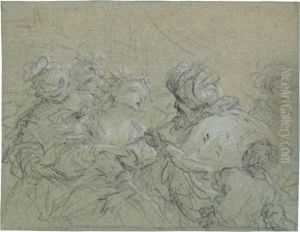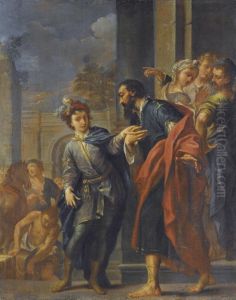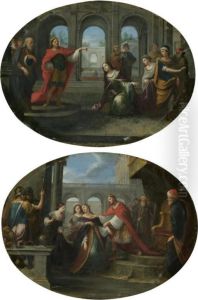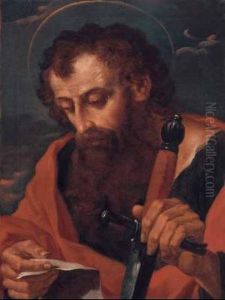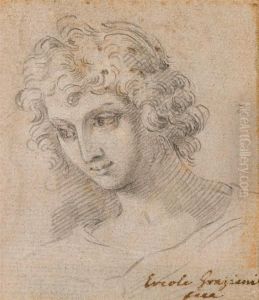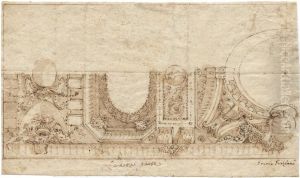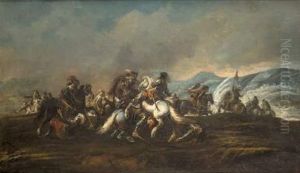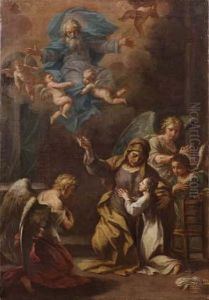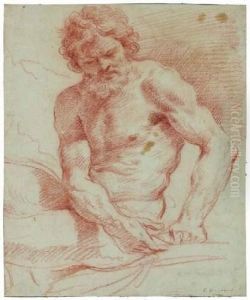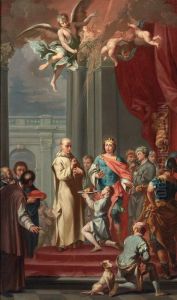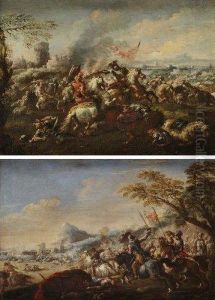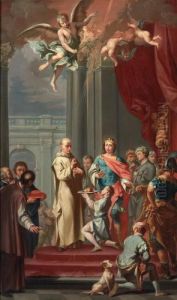Ercole Graziani Paintings
Ercole Graziani the Younger was an Italian painter active during the late Baroque and early Rococo periods. Born in 1688 in Fano, a town in the Marche region of Italy, Graziani was initially influenced by the works of the Carracci family and Guido Reni, which was evident in his early pieces. His style, however, evolved significantly over his career, later embracing the lighter, more decorative elements characteristic of the Rococo movement.
Graziani's training began under the guidance of Felice Torelli, a prominent painter in Bologna, which was then a vibrant center for the arts. This connection provided him with an excellent foundation in the Bolognese style of painting, renowned for its emphasis on dynamic compositions and strong, dramatic contrasts of light and shadow. After completing his studies, Graziani returned to Fano, where he spent a significant portion of his career. Despite his later travels and works in other cities, his contributions to the artistic landscape of Fano were considerable, including numerous altarpieces and frescoes for local churches and buildings.
In the 1720s, Graziani's work began to reflect the influence of the Rococo, particularly in his use of lighter color palettes, graceful figures, and fluid, decorative lines. This shift mirrored wider changes in European art, as the grandiosity and solemnity of the Baroque gave way to Rococo's charm, wit, and elegance. Among his notable works from this period are the frescoes in the Palazzo Montani Antaldi in Fano, which are celebrated for their vibrant colors and dynamic compositions.
Throughout his career, Graziani also worked in various cities across Italy, including Rome, where he was influenced by the works of Raphael, and Bologna, where he contributed to the rich artistic tradition of the city. His ability to blend the dramatic intensity of the Baroque with the airy lightness of the Rococo made his works highly sought after by patrons across the Italian peninsula.
Ercole Graziani the Younger died in 1765, leaving behind a legacy that was instrumental in the transition between two major art historical periods. His body of work continues to be studied for its contribution to the development of Italian painting, particularly in the context of the evolution from Baroque to Rococo art. Graziani's art remains a testament to the vibrancy and fluidity of Italian art in the 18th century, embodying the transition of styles and tastes of his time.
